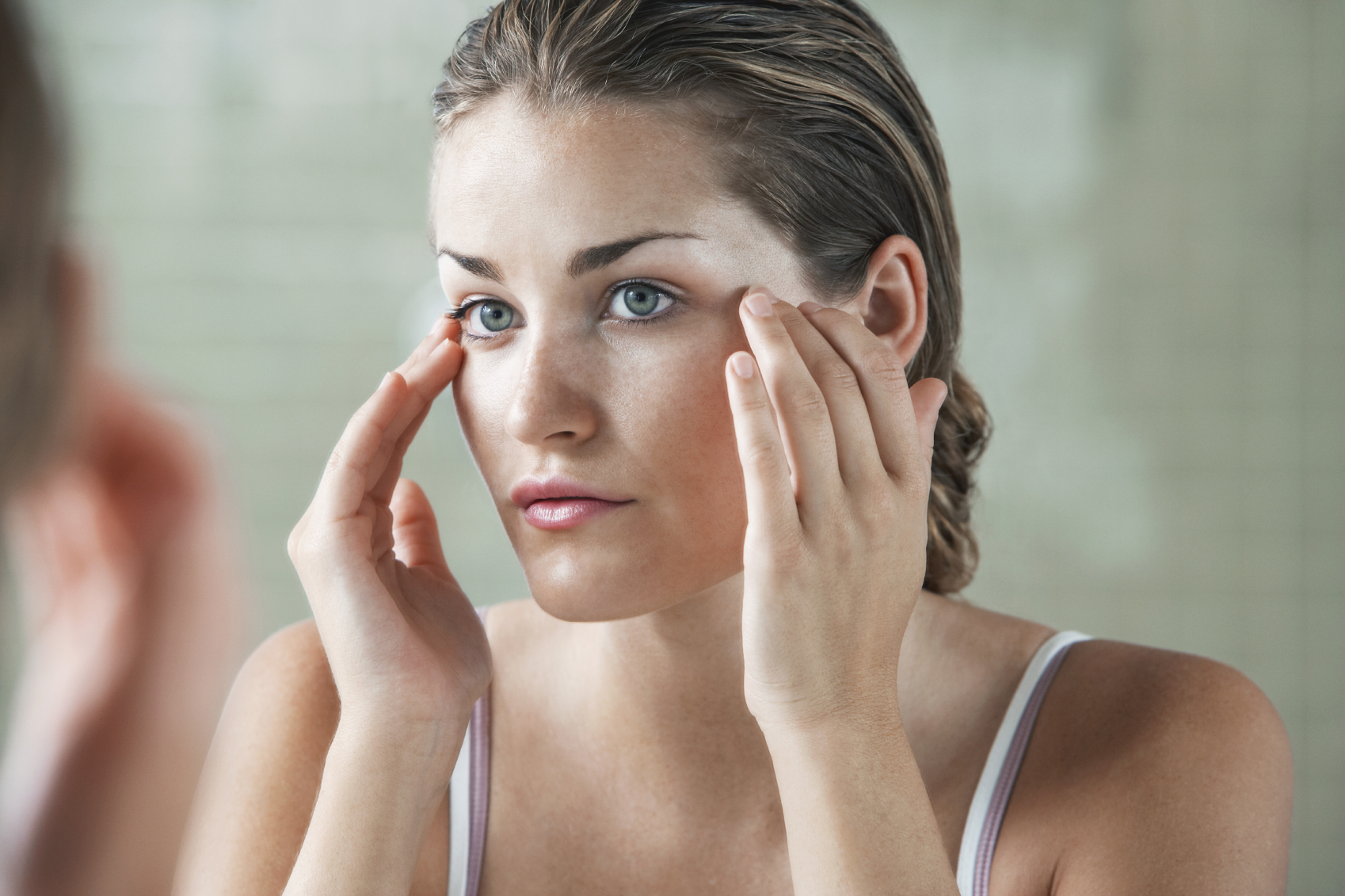If you feel lousy and suspect a vitamin deficiency, your doctor will likely give you a blood test or some other kind of expensive screening.
But sometimes the best way to tell if you are lacking in an important nutrient is to look in the mirror. Experts say signs of deficiencies often show up in your face.
Here are five common facial symptoms linked to vitamin deficiencies.
- Pale Complexion
If you notice that you appear paler than normal, this could indicate a vitamin B12 deficiency. Check your tongue. It should be a little bumpy. If it is totally smooth, this is another sign of B12 deficiency. Lack of this vitamin can cause fatigue and poor memory.1,2
Vitamin B12 comes from animal sources only. That’s why vegetarians are at risk for a deficiency. Good sources are wild-caught fish, shellfish, grass-fed meats, organic poultry, and pastured eggs. You can also take a supplement. A sensible dosage is 50 mcg a day.3
2. Bad Hair
Dandruff, dry skin, brittle hair, and hair loss are all signs you are low in vitamin B7, or biotin.4,5,6
Taking antibiotics can disrupt intestinal bacteria that produce B7.7 Cauliflower, egg yolks, and mushrooms are good sources of this vitamin. But egg whites can actually interfere with your body’s absorption of B7. 8,9 If you take a supplement, go for a daily dosage of 50 mcg.
3. Puffy Eyes
Puffy eyes and bloated legs can be signs of an iodine deficiency. Other symptoms include weight gain, dry skin, and brittle nails. Your body uses iodine to produce thyroid hormones.
The use of table salt, a major source of iodine in our diets, has been declining for decades due to low-salt diets. At the same time, there is less iodine in salt than decades ago. This has created what some experts call a “silent epidemic” of iodine deficiency.10,11
Other than table salt, natural sources include saltwater fish, sea vegetables such as kelp, dulse, hijiki, and nori.
Adults should get 150 mcg of iodine daily. Since this compound is extremely important to the development of a baby’s brain, pregnant women need 220 mcg. Breastfeeding mothers should get 290 mcg.12,13,14
4. Pale Lips
Check the inside of your lips, your gums, and the inside of the bottom of your eyelids. If they are pale you could be suffering from low iron. This is the most common nutritional deficiency in America.
Women are more likely to have low levels than men. It causes strange cravings. They may feel like eating dirt, clay, or ice. This is the body’s way of trying to ingest iron.15,16
Iron is an essential mineral. It’s found in every cell of the body. It transports the oxygen in your blood to your tissues. Woman with heavy periods are particularly susceptible to an iron deficiency.
Red meat, dried beans, spinach, and fish are some of the best dietary sources. If you are going to take a supplement, the recommended daily dose is 8 mg.17
5. Tender or Bleeding Gums
This indicates a deficiency you never want to ignore. Vitamin C is often acclaimed for boosting immunity. But a deficiency can cause severe health problems. Bleeding gums, brittle hair, and muscle aches are all symptoms. A severe vitamin C deficiency causes scurvy. This can cause teeth to fall out.
Citrus, cantaloupe, berries, kiwi, mango, papaya, pineapple, watermelon, and red peppers are high in vitamin C.18 If you take a supplement, get a daily dosage of at least 250 mg.19
Pay close attention next time you look in the mirror… Your reflection could reveal a dangerous deficiency. It’s a problem you can fix… But you may not to be able to avoid vitamin deficiencies with food alone.
A simple solution is to add a daily high-quality multivitamin. Just not the ones you’ll find at most drugstores. Your best bet is to get a wholefood-sourced vitamin from your local health food store or online.
In Good Health,

Angela Salerno
Publisher, INH Health Watch
Like this Article? Forward this article here or Share on Facebook.
References:
1http://www.msn.com/en-us/health/nutrition/10-signs-you-have-a-vitamin-deficiency-and-what-you-should-eat-to-change-that/ss-AAfUfTx#image=2
2 http://www.webmd.com/food-recipes/guide/vitamin-b12-deficiency-symptoms-causes?page=2
3http://www.drweil.com/drw/u/ART02810/facts-about-vitamin-b
4http://www.msn.com/en-us/health/nutrition/10-signs-you-have-a-vitamin-deficiency-and-what-you-should-eat-to-change-that/ss-AAfUfTx#image=2
5http://www.drweil.com/drw/u/ART02764/vitamin-b7.html
6http://www.webmd.com/skin-problems-and-treatments/seborrheic-dermatitis-medref
7http://www.drweil.com/drw/u/ART02764/vitamin-b7.html
8http://www.msn.com/en-us/health/nutrition/10-signs-you-have-a-vitamin-deficiency-and-what-you-should-eat-to-change-that/ss-AAfUfTx#image=2
9http://www.webmd.com/vitamins-supplements/ingredientmono-313-biotin.aspx?activeingredientid=313&
10http://www.globalhealingcenter.com/natural-health/symptoms-of-iodine-deficiency/?gclid=CN-cya3jxcoCFdCPHwodIhIGrA
11http://blogs.webmd.com/integrative-medicine-wellness/2008/03/are-you-getting-enoughiodine.html
12http://blogs.webmd.com/integrative-medicine-wellness/2008/03/are-you-getting-enough-iodine.html
13http://www.lifeextension.com/magazine/2011/10/the-silent-epidemic-of-iodine-deficiency/Page-01
14https://ods.od.nih.gov/factsheets/Iodine-HealthProfessional/#h2
15http://www.msn.com/en-us/health/nutrition/10-signs-you-have-a-vitamin-deficiency-and-what-you-should-eat-to-change-that/ss-AAfUfTx#image=2
16http://www.health.com/health/gallery/0,,20798655,00.html
17http://www.webmd.com/vitamins-and-supplements/lifestyle-guide-11/supplement-guide-iron
18https://www.nlm.nih.gov/medlineplus/ency/article/002404.htm
19http://www.drweil.com/drw/u/ART02811/facts-on-vitamin-c

